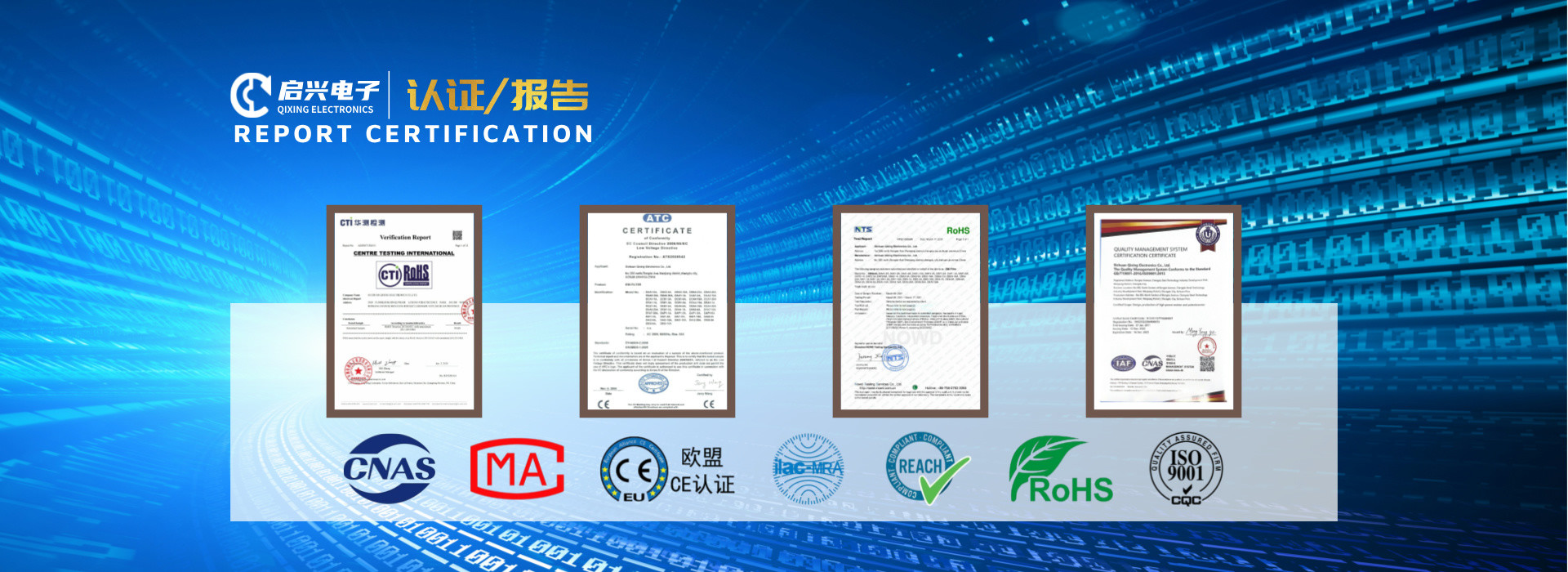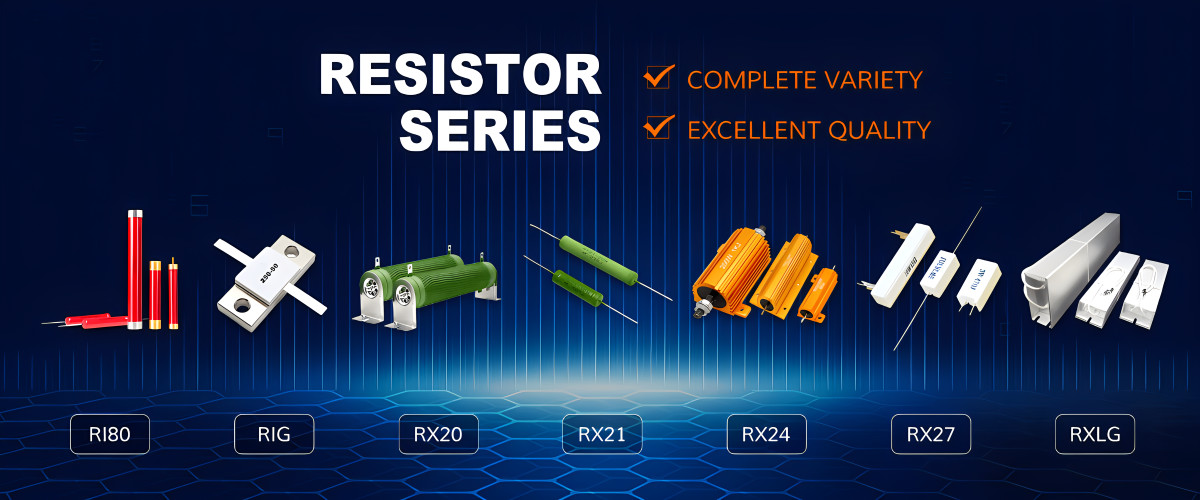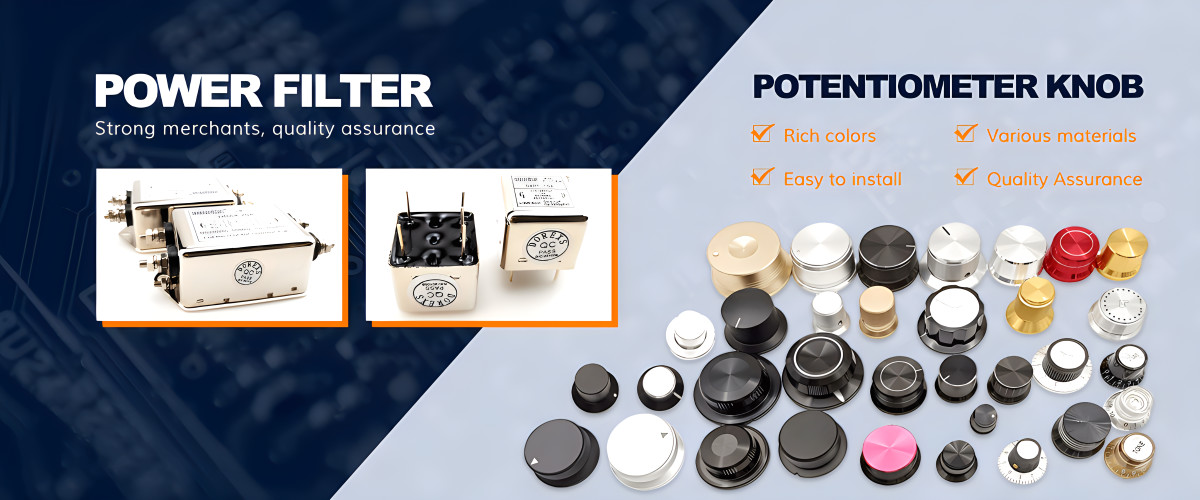Potentiometers are a type of resistor that is used to manage the output signal of an electronic device such as a guitar, amplifier, or speaker. They have a small shaft on top that acts like a knob; when the user turns the shaft, the resistance to the signal increases or decreases. This change in resistance will alter the volume, gain, or power of the electrical signal.If you intend to install and wire a pot, it is very essential to ground the first terminal, feed the input signal into the third terminal, and then run an output signal through the terminal in the middle. To accomplish this, solder each wire to the corresponding terminal. Fortunately, if you've worked with soldering tools before, learning how to wire a potentiometer is a fairly simple process. Let us have a look at how to wire a Potentiometer?
Part1:Selecting and Preparing a Pot
Place your pot on a flat surface
step1: Determine the three main terminals that protrude from the center of the pot. Place your pot on a flat surface with the three prongs facing you. These are your access points. Your ground is located at the first terminal, or terminal 1. The middle terminal, or terminal 2, is the pot's input signal. The output signal is connected to the third terminal, or terminal 3. The top shaft is in charge of a small ring connected to the second terminal. By turning it, you can adjust how low or high the input is.
Look at the resistance numbers
step2: Look at the resistance numbers on your pot to see what range you can achieve. Pots are rarely used to control signals higher than a few volts, but the amount of resistance they provide is significant. The greater the range, the greater your control over your device. The number on the front of the pot indicates the pot's maximum level of resistance. As a result, a 200K pot can provide a maximum resistance of 200,000 ohms.
Tip: It is important to be aware of how much resistance a pot provides in order to determine whether or not it is appropriate for the task at hand. A 2,000-ohm pot won't provide enough range for a stereo system, but it should suffice for a dimmer switch.
three terminals
step3: Place your pot on a flat surface so that the three terminals face you. Set your pot next to your electronic device on a flat surface. If you know you're going to install the pot in a specific location, begin there. Rotate the three terminals so that they face you. Remove any panels on your electronic device to expose any input or output ports on the backside.
If you're using a breadboard, place the pot on the uppermost set of rows, terminals facing you.
Before you open any panels or solder any connections, unplug your electronic device. You do not want to be electrocuted or permanently harm your device.
cut 0.5–1 in (1.3–2.5 cm)
step4: Any wires you intend to use should be measured and stripped. As long as the soldering wire is not acid-core, you can connect the terminals to the device with any genre of soldering wire. Measure each length of wire from the terminal to the device if you have an installation location set up. Strip any wires to expose the copper with a cutter. Cut and remove 0.5–1 in (1.3–2.5 cm) of plastic from the tip of each wire using the notches on the cutter's blades
Set your wire stripper to match the gauge of the wire to ensure a clean strip.
Get your soldering iron and flux ready on your work surfaceas you'll need to solder your wires.
Plumbing makes use of acid-core soldering wire. It is incompatible with your electronics.
If the soldering wires don't work, those insteadcan be used to wire a specific type of electronic device that requires specialized wires.
Part2: Soldering Your Terminals
step5: Connect a ground wire from terminal 1 on the left to the chassis. Tin a small length of wire by tapping it with your soldering iron and flux on the exposed part. After the wire has absorbed some flux, lower it and connect it to the exposed metal part on terminal 1. To connect the wire to the terminal, press your soldering tip against the connection. Solder the other end of the cable to any exposed, unpainted metal surface on your electronic device.
If you want, you can use terminal 3 on the right, but you'll have to turn the knob clockwise to reduce the signal.
Connect your device's output circuit to the middle terminal
step6: Connect your device's output circuit to the middle terminal. Tin another length of wire in the same manner and connect it to the pot's middle terminal. Because this is where the signal enters the pot, it must be connected to the device's output. Solder the wire to the metal connection on the back of the output connection of your electronic device.
The potentiometer's input is connected to the middle terminal. This means that the signal exits the electronic, enters terminal 2, and then exits terminal 3. As a result, terminal 2 must be connected to the port that sends the device's original signal out.
This would imply connecting terminal 2 to the output jack on a guitar. This would imply connecting terminal 2 to the speaker output terminal of an integrated audio amplifier.
terminal 3
step7: Connect terminal 3 to the device's input. Terminal 3 is the output of the potentiometer. It is the location where the pot sends data back to the device. Tin a length of exposed soldering wire and place it directly on the terminal. Connect the wire to the input port of your electronic device after heating it with your soldering pen. Look for the exposed metal opening on the back of the knob or cable connection at the back of the port. To connect the pot, solder the wire directly to it.
Terminal 3 is where the signal from your pot exits, so it must be wired to the location where you want to send the signal.
This would imply connecting terminal 3 to the input jack on a guitar. Terminal 3 on an audio amplifier would be connected to the input channels.
Part3: Using Your Potentiometer
Measure Potentiometer
step8:Using a voltmeter, check that your pot is operational. Connect the voltmeter's terminals to the pot's input and output terminals. To feed a signal, turn on the voltmeter and turn the dial. To adjust the signal, turn the knob on top of your pot. Your potentiometer is operational if the signal reading on the voltmeter goes up and down as you turn the knob.
If the voltmeter registers a signal from your pot but the device does not work when you turn your electronics on, there is a problem with the soldered connections.
signal from your pot
step9: Turn the shaft to adjust the signal on your device. Turn on your electronic device and send a signal to the pot by playing music, striking a guitar note, or switching on a light. To reduce the volume or brightness, twist the shaft to the left. To increase the volume or level of light, twist the shaft to the right. To turn off the output, turn the shaft to the left.
You can now adjust the amount of resistance that your signal receives by using your pot.
adjust the amount of resistance
If you want, you can add a knob by sliding it over the potentiometer. If you prefer, you can install a potentiometer with the shaft bare and exposed. However, if you want to improve the aesthetics of your potentiometer, you can always purchase a knob. There are numerous knobs on the market that are designed to slide over the shaft of a pot and improve its appearance.
That is all steps about how to wire a potentiometer. You can find what options are available for your specific make and model form online electronic stores.
If you want, you can add a knob by sliding it over the potentiometer. If you prefer, you can install a potentiometer with the shaft bare and exposed. However, if you want to improve the aesthetics of your potentiometer, you can always purchase a knob. There are numerous knobs on the market that are designed to slide over the shaft of a pot and improve its appearance.
That is all steps about how to wire a potentiometer. You can find what options are available for your specific make and model form online electronic stores.

 Your message must be between 20-3,000 characters!
Your message must be between 20-3,000 characters! Please check your E-mail!
Please check your E-mail!  Your message must be between 20-3,000 characters!
Your message must be between 20-3,000 characters! Please check your E-mail!
Please check your E-mail! 







